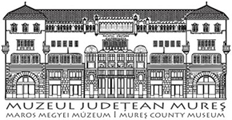Marisia - Maros Megyei Múzeum Évkönyve 25. (1996)
I. Arheologie
THE ROMAN RURAL SETTLEMENT OF CRISTE$TI 23 which covered not only the needs of the settlement, but got abroad in the rural neighbouring zones, too. Alike Micäsasa, the vicus of Criste§ti is a typical settlement of potters9. The pottery, extremely various as shapes and quality, is compose of a few luxury vessels enamelled or in the terra sigillata technique but mainly of pots manufacturated in the local workshops, some of them imitating the terra sigillata stamped vessels, others, for common use, red or grey, which continue the shapes and the decoration of an older native tradition. Besides the abundant Roman provincial pottery material, there was also found numerous lucernae, statuettes and clay figurines. Thus, the productions of the local workshops appears to us as being extremely diversified. The common pottery manufacturated at Criste§ti was classified in two large categories10: the red pots and the grey ones11. As we all know, the quality of the paste of the common pottery differs depending on the type of the pot. Thus we can speak of low forms (bowls, plates) and of tall forms (mugs, jugs, provision vessels -dolia, amphorae). According to their shape, the red pots -more frequently met than the grey ones- are classified into three categories: a) bowls, cups and plates; b) pots, mugs, jugs, dolia. In the case of these types of vessels prevails the paste of high quality. The grey ceramics of Criste§ti is manufacturated of a porous paste, the shapes are less various comparatively with the red pots, and the decoration is more stereotype. As it was pointed out, certain shapes and decorative motifs met in the red pots as well as on the grey ones show native influence12 13 *. It was also underlined the connection which is supposed to exist between the Dacian provision vessels and the big, red pots, having a similar shapes, found at Criste§ti. But, by far the most interesting vessels are the stamped pottery of pure paste, generally dated in the 2nd century. The bowls are the shape of pottery on which appear pre-eminently the stamped motifs.The decoration of these vessels shows a rich geometrical, vegetal and animal repertory. A considerable part of the decorative motifs12 was inspired by the decorations met on the luxury vessels, terra sigillata. The import O.FIoca, St.Ferenczi, L.Márghitan, Micia, grupul de cuptoare romane pentru ars ceramica, Deva, 1970. 10 D.Popescu, op.cit., p. 124 sqq. 11 Ibidem. 12 D. Protase, Autohtonii in Dacia, Bucure§ti, 1980, p. 104,162, 235. 13 As regards the diffusion of terra sigillata pottery into Dacia, see D.lsac, Terra sigillata in Dacia romanä, Diss., Cluj, 1985.
